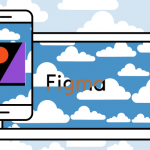
‘As a kid, I always loved Legos, and this is just like Legos,” Guy Barness said excitedly as he stacked a block of succulent plants on top of a block of grass, next to a block of ornamental plants, on a wall designed to hold vertical gardens, or green walls if you will.
Get The Times of Israel’s Daily Edition by email
and never miss our top stories FREE SIGN UP!
Barness is CEO of the aptly named company GreenWall Israel, which creates unique vertical plant installations, including a 840-square-meter (9,000-square-feet) vertical farm that was the centerpiece of Israel’s exhibition at the 2015 Milan EXPO. The separate blocks of plants, which can be arranged and rearranged at whim, are the company’s trademark vertical garden system.
Still riding the momentum of the Milan EXPO, Barness is focusing on the possibility of building green walls not just for decoration, but as vertical farms that can be a partial solution to food insecurity and provide for increasingly urbanized societies.
According to the United Nation’s World Urbanization Prospects, 54 percent of the world’s population currently lives in urban areas. This is an increase from 1950, when just 30% of the global population lived in cities. By 2050, 66% of the world’s population is projected to live in metropolises. By 2030, the world is expected to have 41 mega-cities, with 10 million inhabitants each.
The current refugee crisis has highlighted the immediacy of the issue. Refugees now flooding into Europe overwhelmingly move to cities. This leads to overcrowding and a strain on resources as urban centers struggle to absorb tens of thousands or even hundreds of thousands of people. But Barness believes vertical gardens could feed and employ refugees around the world.
“Refugees are going to places where they can work, and they are not going to rural areas,” said Barness. “We need to bring back nature to the city. We don’t have a lot of space [in cities], but we do have a lot of walls.”
Offices and apartment buildings grow vertically as urban space shrinks, so why not agricultural fields?
Barness is working with the US Agency for International Development (USAID), the United Nations, and local governments in Italy, Germany, Spain and Georgia to implement “vertical garden kits” for refugees.
Each five square meter kit costs about $400 and can be hung by a refugee or a family on any wall in order to grow their own vegetables, which they can sell to local restaurants (private customers can purchase the same kit for $800). These gardens require just 18 liters of water a week for each square meter. The growing blocks can be combined or separated as needed to fit to any wall.
 An example of a vertical garden at the GreenWall greenhouse during a tour on March 23, 2016. (Melanie Lidman/Times of Israel)
An example of a vertical garden at the GreenWall greenhouse during a tour on March 23, 2016. (Melanie Lidman/Times of Israel)
An example of a vertical garden at the GreenWall greenhouse during a tour on March 23, 2016. (Melanie Lidman/Times of Israel)
Vertical gardens are part of a worldwide trend looking for ways to marry technology and agriculture in an attempt to feed an ever-expanding global population.
Other companies in Israel also build vertical gardens for private and commercial use, including Rozenbaum Advanced Gardening Systems. And the concept has caught on among gardening enthusiasts, including Yael Stav, a PhD studying vertical gardnes, who opened her unique Tel Aviv garden to the public during the 2012 Houses from Within event.
The new trend is promising, Barness believes. “The young generation is scared of agriculture,” he said. “It’s not the way that it used to be, that someone gets four dunams [about an acre] from their father to grow their family farm… but when you work with technology, it attracts the younger generation.”
Barness himself came to vertical gardens via a roundabout path. He was originally in mall management, overseeing malls in Rishon Lezion, Jerusalem, Tel Aviv, and Ashdod. As he expanded to manage international malls, he had a project in Georgia to build a large mall in the capital of Tbilisi’s Old City.
The Tbilisi mayor, being less than thrilled about a massive building ruining the Old City’s skyline, asked for creative ways to integrate the building into the landscape. Barness held a competition for architects, and one team suggested covering the building with “living walls,” or vertical gardens of decorative plants. Barness loved the idea, but further research revealed that the technology wasn’t quite advanced enough for what they needed.
Green walls can be very heavy (the GreenWall lightweight version is still 80 kilograms or nearly 180 pounds for each square meter), and unwieldy. They can be difficult to change out if the plants die. So Barness decided to shift his focus to building massive green walls, divided into manageable “plant blocks.” His mall in Georgia was never built due to the 2008 Russia-Georgian war, but Barness’s career path completely changed.
 Succulents do especially well in vertical gardens. They grow first on a table using regular sprouting methods, and then are transplanted into the plant blocks to grow vertically. (Melanie Lidman/Times of Israel)
Succulents do especially well in vertical gardens. They grow first on a table using regular sprouting methods, and then are transplanted into the plant blocks to grow vertically. (Melanie Lidman/Times of Israel)
Succulents do especially well in vertical gardens. They grow first on a table using regular sprouting methods, and then are transplanted into the plant blocks to grow vertically. (Melanie Lidman/Times of Israel)
At first, he concentrated on building decorative green walls, with ornamental plants. He designed installations for the Israel offices of Facebook, Apple, Microsoft, Intel, and Isrotel.
On principle, when he started the GreenWall company (called Vertical Field abroad) in Ramot HaShavim next to Kfar Sava, he decided to employ only African migrants in his greenhouse. “Why should I import Thai workers, when we have so many refugees already here that need jobs?” he asked. (On the day Times of Israel visited, almost all of the employees were out maintaining or building installations.)
It was his workers who gave Barness the idea of growing food on the walls. His workers, who are mainly Eritrean, live in caravans on the property. Although they did not come from agricultural backgrounds in Eritrea, when they learned the techniques for building vertical gardens through their work, they decided to start growing their own vegetables on the side of their caravan.
Soon the caravan was sprouting with cherry tomatoes, zucchini, parsley, mint, and coriander. Barness wanted to scale up.
 Barness’s workers, who are mostly from Eritrea, started growing spices and tomatoes on the side of their caravan after learning how to build decorative vertical gardens, pictured here on March 23, 2016. (Melanie Lidman/Times of Israel)
Barness’s workers, who are mostly from Eritrea, started growing spices and tomatoes on the side of their caravan after learning how to build decorative vertical gardens, pictured here on March 23, 2016. (Melanie Lidman/Times of Israel)
Barness’s workers, who are mostly from Eritrea, started growing spices and tomatoes on the side of their caravan after learning how to build decorative vertical gardens, pictured here on March 23, 2016. (Melanie Lidman/Times of Israel)
“I started with decorative walls, but this is a trend that is sweeping the whole world, of making things useful,” explained Barness. “It’s not just a green wall anymore, it’s to clean air pollution, or change the acoustics, or to grow food.”
It’s the food option that has Barness most excited. “When we are bringing a lot of people to the city, we need to supply them with something to eat and something to do,” he said. “When I look at cities, I see there’s a problem. There is a lot of concrete without plants, we don’t know how to combine them with nature. My vision is to give a new way to bring back nature… if we can do it in an economic way, in a large-scale way, we have an opportunity to change the city.”
“We presented a concept with the Fields of Tomorrow [the exhibition at the Expo], and now we have to put this into practice,” said Barness. “Refugees are the first step to doing this concept. We don’t need to give up on nature.”
 GreenWall Israel CEO Guy Barness shows the watering system that utilizes just 18 L per week per square meter of vertical garden, on March 23, 2016. (Melanie Lidman/Times of Israel)
GreenWall Israel CEO Guy Barness shows the watering system that utilizes just 18 L per week per square meter of vertical garden, on March 23, 2016. (Melanie Lidman/Times of Israel)
GreenWall Israel CEO Guy Barness shows the watering system that utilizes just 18 liters of water per week per square meter of vertical garden, on March 23, 2016. (Melanie Lidman/Times of Israel)
Vertical walls are also flexible enough enable the company to tweak certain aspects. Want to grow a green wall in a dark area? Thread some LED lights through the plant blocks; they can emit a blue light at a special frequency to encourage growth, or a red light to encourage blossoming.
Vertical gardens require plants to grow in a small amount of soil, both to reduce weight and also to give the roots stability against gravity. But this means their soil needs fertilizer to replenish the nutrients that plants need to grow. Vertical gardens can use large amounts of chemical fertilizers and pesticides, but new regulations dealing with agricultural wastewater in Europe have made it difficult to dispose of water that has fertilizer in it.
Barness uses a combination of fungi and probiotics, concentrated amounts of naturally occurring bacteria. Probiotics are generally found in yogurt, and they help regulate the intestines and strengthen immune systems, among other things. Barness calls them “ninjas,” because they are good bacteria that fight and kill bad bacteria. He adds them to the watering system, where they infiltrate the plant and are eventually released into the air. He claims offices that have green walls utilizing probiotics mean healthier employees who get sick less, because they are surrounded by plants that exhale probiotics.
Barness explained that as more people start growing their own vertical gardens, they will be able to personalize their garden to their needs. Did your doctor tell you have an iron deficiency? Low vitamin D? You could add a special mixture to the watering system so that you grow iron-enriched or vitamin-D enriched parsley yourself, eliminating the need for pills.
 GreenWall Israel workers install a vertical garden using plant “blocks” in the office’s greenhouse on March 23, 2016. (Melanie Lidman/Times of Israel)
GreenWall Israel workers install a vertical garden using plant “blocks” in the office’s greenhouse on March 23, 2016. (Melanie Lidman/Times of Israel)
GreenWall Israel workers install a vertical garden using plant “blocks” in the office’s greenhouse on March 23, 2016. (Melanie Lidman/Times of Israel)
The downside to vertical? These systems aren’t cheap. They require enormous technological knowhow to build the system, and periodic monitoring to ensure it is working correctly. Although the kits for refugees or private customers can be assembled easily, they are still pricey. But Barness argues that in cities, space is at a premium. Though vertical gardens are more expensive than horizontal gardens, they more than make up for that in efficiency.
Barness said his biggest challenge is encouraging people to consider farms that are growing upwards rather than spreading out. The idea is so foreign that it takes people a while to understand and embrace the idea.
 During a tour of the GreenWall greenhouse on March 23, 2016, Barness shows stamps issued by the Israeli government, showing the vertical farm at the 2015 Milan Expo. (Melanie Lidman/Times of Israel)
During a tour of the GreenWall greenhouse on March 23, 2016, Barness shows stamps issued by the Israeli government, showing the vertical farm at the 2015 Milan Expo. (Melanie Lidman/Times of Israel)
During a tour of the GreenWall greenhouse on March 23, 2016, Barness shows stamps issued by the Israeli government, showing the vertical farm at the 2015 Milan Expo. (Melanie Lidman/Times of Israel)
The facts are indisputable: more people than ever are living in cities. Society needs to find a way to feed all of them. That way will probably require a combination of technology, new ideas, and creative use of space.
“It’s not easy to change the way people have thought for the past hundred years [about urban agriculture],” he said. “But in the end we’ll do it. We will be in every large city. You’ll see a huge vertical field with Israeli technology.”
Barness noted that the vertical fields show an alternate side of Israel, one not connected to terror and war. “You can take a nun or a Muslim person and bring them here, and they won’t fight over this,” he said.
“Plants create peace. If there’s something that people can’t disagree over, it’s this,” he said, gesturing to the wall of green behind him, block on top of block of ferns swaying slightly in the breeze, reaching up toward the ceiling.
[“source-Timesofisrael”]











